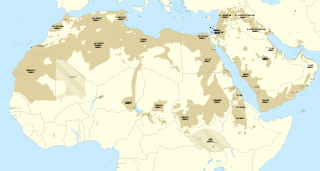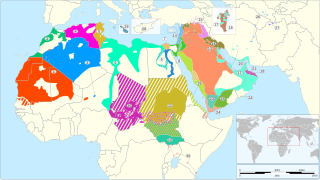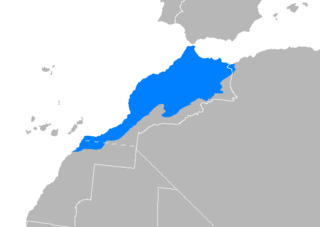Related Research Articles

Natives of the Arabian Peninsula, many Qataris are descended from a number of migratory Arab tribes that came to Qatar in the 18th century from mainly the neighboring areas of Nejd and Al-Hasa. Some are descended from Omani tribes. Qatar has about 2.6 million inhabitants as of early 2017, the vast majority of whom live in Doha, the capital. Foreign workers amount to around 88% of the population, the largest of which comprise South Asians, with those from India alone estimated to be around 700,000. Egyptians and Filipinos are the largest non-South Asian migrant group in Qatar. The treatment of these foreign workers has been heavily criticized with conditions suggested to be modern slavery. However the International Labour Organization published report in November 2022 that contained multiple reforms by Qatar for its migrant workers. The reforms included the establishment of the minimum wage, wage protection regulations, improved access for workers to justice, etc. It included data from last 4 years of progress in workers conditions of Qatar. The report also revealed that the freedom to change jobs was initiated, implementation of Occupational safety and health & labor inspection, and also the required effort from the nation's side.

The Semitic languages are a branch of the Afroasiatic language family. They include Arabic, Amharic, Tigrinya, Aramaic, Hebrew, Maltese and numerous other ancient and modern languages. They are spoken by more than 330 million people across much of West Asia, North Africa, the Horn of Africa, Malta, and in large immigrant and expatriate communities in North America, Europe, and Australasia. The terminology was first used in the 1780s by members of the Göttingen school of history, who derived the name from Shem, one of the three sons of Noah in the Book of Genesis.
Comorian is the name given to a group of four Bantu languages spoken in the Comoro Islands, an archipelago in the southwestern Indian Ocean between Mozambique and Madagascar. It is named as one of the official languages of the Union of the Comoros in the Comorian constitution. Shimaore, one of the languages, is spoken on the disputed island of Mayotte, a French department claimed by Comoros.
Maghrebi Arabic, often known as ad-Dārija to differentiate it from Literary Arabic, is a vernacular Arabic dialect continuum spoken in the Maghreb. It includes the Moroccan, Algerian, Tunisian, Libyan, Hassaniya and Saharan Arabic dialects. Maghrebi Arabic has a predominantly Semitic and Arabic vocabulary, although it contains a significant number of Berber loanwords, which represent 2–3% of the vocabulary of Libyan Arabic, 8–9% of Algerian and Tunisian Arabic, and 10–15% of Moroccan Arabic. Maghrebi Arabic was formerly spoken in Al-Andalus and Sicily until the 17th and 13th centuries, respectively, in the extinct forms of Andalusi Arabic and Siculo-Arabic. The Maltese language is believed to have its source in a language spoken in Muslim Sicily that ultimately originates from Tunisia, as it contains some typical Maghrebi Arabic areal characteristics.

Tunisian Arabic, or simply Tunisian, is a variety of Arabic spoken in Tunisia. It is known among its 12 million speakers as Tūnsi, "Tunisian" or Derja to distinguish it from Modern Standard Arabic, the official language of Tunisia. Tunisian Arabic is mostly similar to eastern Algerian Arabic and western Libyan Arabic.
Nobiin, also known as Halfawi, Mahas, is a Nubian language of the Nilo-Saharan language family. "Nobiin" is the genitive form of Nòòbíí ("Nubian") and literally means "(language) of the Nubians". Another term used is Noban tamen, meaning "the Nubian language".

Algerian Arabic, natively known as Dziria, Darja or Derja, is a variety of Arabic spoken in Algeria. It belongs to the Maghrebi Arabic dialect continuum and is mostly intelligible with the Tunisian and Moroccan dialects. Darja (الدارجة) means "everyday/colloquial dialect".
Libyan Arabic, also called Sulaimitian Arabic by scholars, is a variety of Arabic spoken in Libya, and neighboring countries. It can be divided into two major dialect areas; the eastern centred in Benghazi and Bayda, and the western centred in Tripoli and Misrata. The Eastern variety extends beyond the borders to the east and share the same dialect with far Western Egypt, Western Egyptian Bedawi Arabic, with between 90,000 and 474,000 speakers in Egypt. A distinctive southern variety, centered on Sabha, also exists and is more akin to the western variety. Another Southern dialect is also shared along the borders with Niger with 12,900 speakers in Niger as of 2021.

M'saken is a town in north-eastern Tunisia, close to Sousse.
Jijeli, or Jijel Arabic, is a variety of Arabic spoken specifically in the Jijel Province in northeastern Algeria, but traces of it reach parts of the neighboring Skikda and Mila Provinces. It is quite different from all the other Arabic dialects spoken in eastern Algeria and has probably survived into present times because of the geographic enclavement of that mountainous area and the difficulty of terrestrial connections with the rest of the country for centuries.

Varieties of Arabic are the linguistic systems that Arabic speakers speak natively. Arabic is a Semitic language within the Afroasiatic family that originated in the Arabian Peninsula. There are considerable variations from region to region, with degrees of mutual intelligibility that are often related to geographical distance and some that are mutually unintelligible. Many aspects of the variability attested to in these modern variants can be found in the ancient Arabic dialects in the peninsula. Likewise, many of the features that characterize the various modern variants can be attributed to the original settler dialects as well as local native languages and dialects. Some organizations, such as SIL International, consider these approximately 30 different varieties to be separate languages, while others, such as the Library of Congress, consider them all to be dialects of Arabic.

Jordanian Arabic is a dialect continuum of mutually intelligible varieties of Arabic spoken in Jordan.

Moroccan Arabic, also known as Darija, is the dialectal, vernacular form or forms of Arabic spoken in Morocco. It is part of the Maghrebi Arabic dialect continuum and as such is mutually intelligible to some extent with Algerian Arabic and to a lesser extent with Tunisian Arabic. It is spoken by 90.9% of the population of Morocco. While Modern Standard Arabic is used to varying degrees in formal situations such as religious sermons, books, newspapers, government communications, news broadcasts and political talk shows, Moroccan Arabic is the predominant spoken language of the country and has a strong presence in Moroccan television entertainment, cinema and commercial advertising. Moroccan Arabic has many regional dialects and accents as well, with its mainstream dialect being the one used in Casablanca, Rabat, Tangier, Marrakesh and Fez, and therefore it dominates the media and eclipses most of the other regional accents.

Jebli (Jebelia) is a pre-Hilalian Arabic dialect spoken in the mountains of northwestern Morocco.
Western Egyptian Bedawi Arabic, also known as Sahil Maryut Bedouin Arabic, is a group of Bedouin Arabic dialects spoken in Western Egypt along the Mediterranean coast, west to the Egypt–Libya border. Ethnologue and Glottolog classify Western Egyptian Bedawi Arabic as a Libyan Arabic dialect.
The Hilalian dialects are a continuum of Arabic dialects of the Maghreb, which were introduced during the Hilalian invasions between the 11th and 12th centuries, as well as the migration of Arab Hilalian tribes to the Western Maghreb. These dialects played a great role in the emergence of the Egyptian and Maghrebi dialects. The Bani Hilal tribes settled in the region of Casablanca-Settat in Morocco, parts of Libya, central Algeria, and Tunisia.
Pre-Hilalian dialects also called Early Maghrebi Arabic are a continuum of Arabic dialects native to North Africa. They constitute, along with the Hilalian dialects, the larger Maghrebi Arabic family.
This article is about the phonology of Levantine Arabic also known as Shāmi Arabic, and its sub-dialects.
Pre-classical Arabic is the cover term for all varieties of Arabic spoken in the Arabian Peninsula until immediately after the Arab conquests and emergence of Classical Arabic in the 7th century C.E. Scholars disagree about the status of these varieties.
The Fessi dialect is a dialect of Moroccan vernacular Arabic, or Darija, associated with the city of Fes, especially with the old elite families of the city.
References
- ↑ A. Hachimi, The story of old-urban vernaculars in North-Africa, in: The Languages of Urban Africa (coll. Advances in Sociolinguistics), Ed. A&C Black (2011) pp.25-38
- ↑ Kees Versteegh, Dialects of Arabic: Maghreb dialects, in: The Arabic Language, Edinburgh University Press (2001), p. 164–169